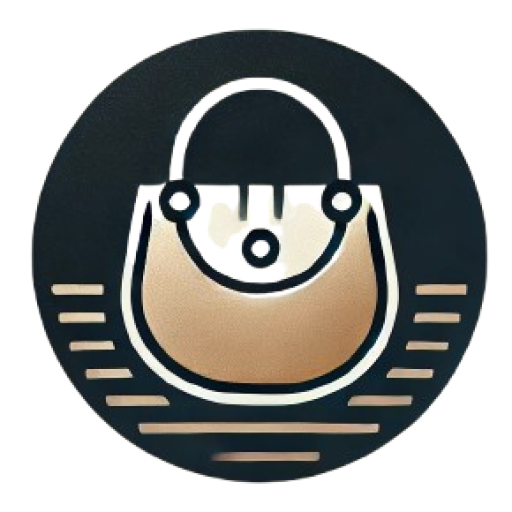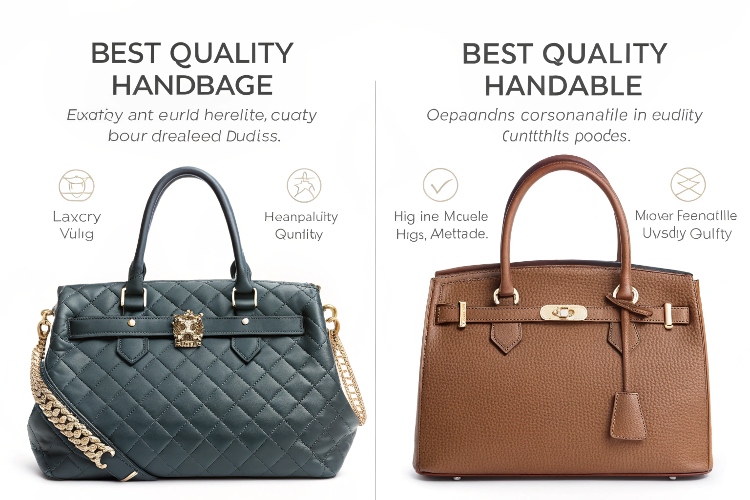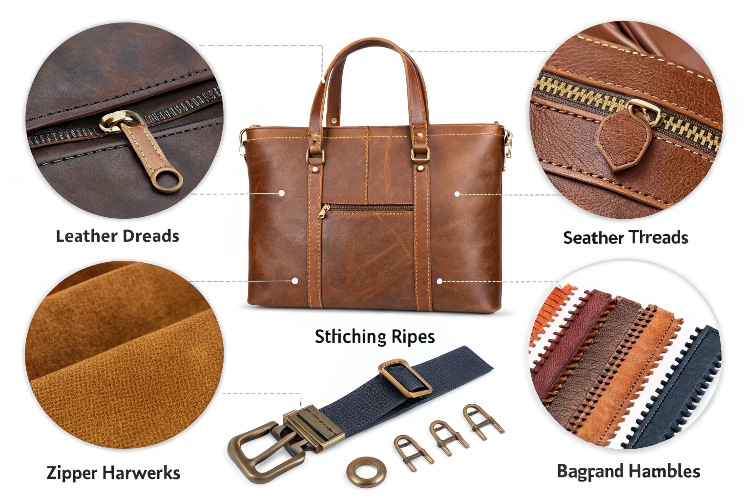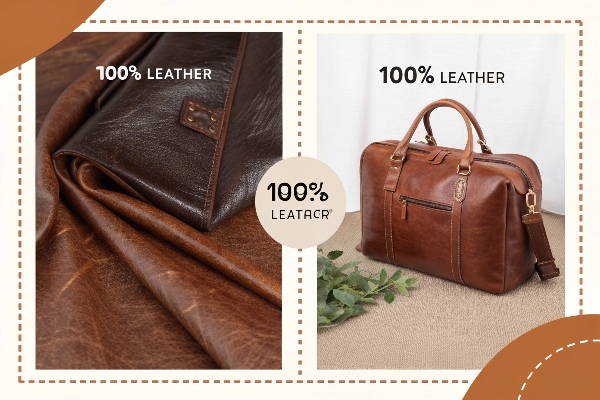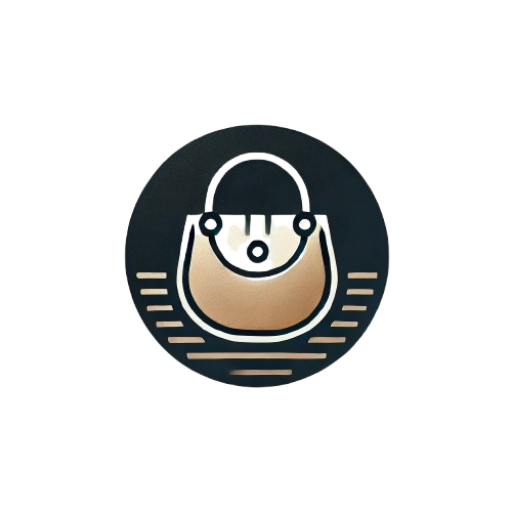- Full-Grain Cowhide
- Why? Most durable, ages beautifully, resists scratches.
- Used by: Luxury brands like Hermès.
- Top-Grain Cowhide
- Why? Lightweight, softer than full-grain, easier to maintain.
- Ideal for: Everyday designer bags (e.g., Coach).
- Vegetable-Tanned Leather
- Why? Eco-friendly, develops a patina over time.
- Popular in: Artisan/sustainable brands.
- Lambskin
- Why? Ultra-soft, luxurious feel.
- Best for: Evening bags (note: delicate, avoid heavy use).
Avoid: Bonded/PU leather – peels quickly, low durability.
Expert Tip: Prioritize full-grain or vegetable-tanned for longevity. Check certifications (e.g., Leather Working Group) for sustainability.
Common Leather Types and Their Characteristics
Full Grain Leather
Foreigners buying bags swear by this. This leather uses only the outermost layer of animal hide with natural texture, retaining hair follicles and pores. Thickness ranges from 1.4-2.0 mm – pressing with a fingernail leaves almost no mark. American saddlebag maker Saddleback tested this: scratches on their full-grain cowhide bags fade over a decade as the leather’s natural oils gradually “push out” imperfections.
Only one downside: expensive. Only 30% of a whole cowhide qualifies as full-grain. Italian Tuscany suppliers charge $25-40 per square foot. But bags using this leather come with lifetime guarantees. Frank Clegg, a craftsman in Brooklyn New York, still has clients using his 1970s-era briefcases made from this leather.
Vegetable-Tanned Leather
Europeans master this, especially in Italy’s Tuscany region. Using plant materials like oak bark and chestnut wood, the tanning process alone takes 2-4 months. Freshly tanned leather resembles light milk tea, turning caramel under sunlight. Insider fact: Hermès Birkin bag linings must use vegetable-tanned leather for breathability, preventing wool scarves from developing odors.
Avoid water contact. YouTuber Rose Anvil tested it – water causes permanent darkening and hardening. London Savile Row leatherworkers taught a trick: gently rub with saddle soap can restore 80% of its original state.
Pull-Up Leather
Recently trending on Instagram. Wax and oil coatings create white marks when scratched, but the finish self-heals within minutes. UK shoemaker Joseph Cheaney in Northampton found its waterproof performance is three times better than regular leather.
Watch out for cheap imitations. Authentic pull-up leather uses dense fiber cow neck hide. Thai factories sometimes coat split leather with wax – these crack within three months. Test method: fold the leather – genuine pieces show uneven “cloud grain” patterns, fakes remain flat.
Crazy Horse Leather
This Chinese-named leather (called Rubbed Effect Leather abroad) uses cow back hide with intentionally rough surfaces. Portugal’s Barcelona Leather Factory stands out – workers stone-polish and beeswax-treat hides after tanning, creating patina ten times more natural than machine-aged effects.
Counterintuitive fact: the rougher the better. LA’s Hollows Leather Workshop selectively uses scarred hides for bags, with clients paying 50% extra for “leather with stories.”
Patent Leather
Don’t be fooled by the name – quality versions no longer use paint. Germany’s Hagenauer factory applies 16 layers of linseed oil and polishes with hippo bone, creating amber-like translucency under NYC Metropolitan Museum lighting.
Avoid using for commute bags. Parisian Galeries Lafayette repair data shows 80% of patent leather bag damages come from subway turnstile scratches. Milan’s Valextra counter reports zero returns on patent leather cardholders over a decade – stick to small accessories.
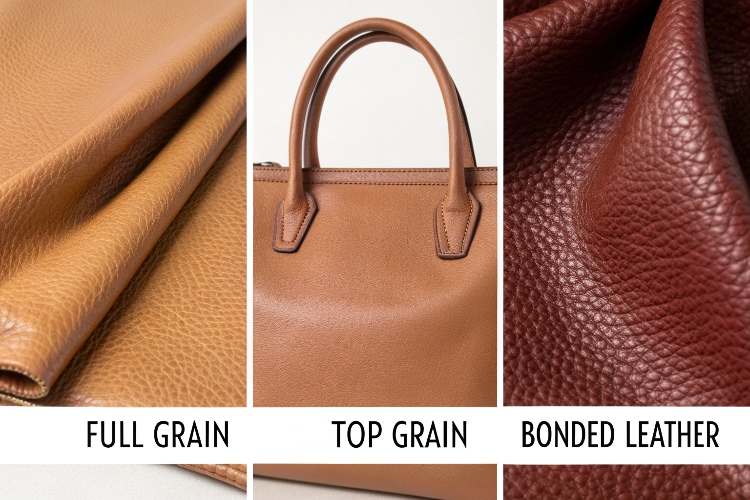
Criteria for Choosing the Best Leather
Durability: Don’t just look at price, check if it’s “tough as nails” first
Does your bag fall apart after a few years? You probably picked the wrong leather. The real durability king is full-grain leather, like Hermès’ favorite Togo leather with natural pebbled texture – scratches fade when rubbed with your fingertip. Italian vegetable-tanned leather also survives battles, using tree bark for tanning and darkening with age, like LV’s monogram-specific leather. But watch out for chrome-tanned leather! Though cheap and colorful, it cracks and peels over time – fast fashion brands love this stuff.
Texture: Only the right feel shows luxury
LV’s monogram embossing, Chanel’s caviar pattern – these aren’t just pretty designs. 3D textures actually increase durability: Epsom leather (crosshatch pressed surface) resists key scratches, used in Delvaux’s Brillant bags. For instant luxury choose smooth box calf, but it scars permanently from fingernail touches. New York designers now obsess over waterwave calf (Peau Porc) – looks like crocodile at half price, proven to survive subway X-ray machines.
Softness: Not always better
Lambskin feels amazing? It sags in 3 days! Pros choose pull-up leather (waxed cowhide) that develops “memory wrinkles” – Loewe’s Puzzle bag uses this. Warning: “soft touch” coatings on cheap leathers wear off to reveal cardboard-like layers. Real supple leather should bounce back when pinched, like Bottega Veneta’s intrecciato weave.
Daily Use Guide
Commute bags: pick Epsom or Togo for toughness; Evening bags: box calf for understated gloss; Diaper bags: waterproof oiled waxed leather; Students: focus on vegetable-tanned that ages vintage-style. Insider tip: cordovan (horsehide) makes perfect wallets – Japan’s Tsuchiya Kaban uses leather cured for 6 months, keeps credit cards straight for a decade.
Premium Leather Recommendations (Crocodile, Ostrich, Calfskin & Other Luxury-Grade Materials)
Crocodile: The Embodiment of Untamed Luxury
If you browse European and American secondhand luxury stores, crocodile bags always dominate the display cases. This leather’s ultimate flex is “one bag, one pattern” – each alligator’s belly scales feature unique textures, particularly the Mississippi alligator’s “bamboo-joint” pattern, which collectors covet more than Nile crocodile’s checkerboard design.
Connoisseurs examine tanning techniques. Hermès’ “matte treatment” makes crocodile skin feel like silk yet scratch-resistant, while Italian brand Valextra’s glossy version creates 3D depth under light. Warning: Some US states ban wild alligator skin products – check local laws before buying.
Ostrich: Stealth Wealth Code
In Texas old-money circles, ostrich leather signals true status. The magic lies in those raised pores – over 100 oil glands per square centimeter make the leather shine brighter with use. South African ranchers reveal they harvest 18-month-old ostriches for optimal pore distribution.
Compared to crocodile, ostrich leather weighs 30% less yet outlasts it. Harrods London buyers note Bottega Veneta’s woven ostrich bags develop richer patina after a decade – proof of masterful tanning.
Calfskin: The Luxury Gateway
Don’t let “calf” fool you – Box calf and Togo (pebbled calfskin) form luxury handbags’ backbone. The French Leather Association’s 2023 report shows Chanel 19 series’ Togo leather undergoes six hand-sanding rounds to achieve “breathable” matte texture.
Tuscany’s Rossa calfskin is a dark horse. Its pink undertones make LV Capucines bags appreciate 40% in three years. Note: True luxury-grade calfskin exceeds 1.4mm thickness – budget brands often use 0.8mm scraps.
Niche But Legendary Contenders
Cordovan (horse rump leather) recently resurged – this metallic-gloss material requires two-year waitlists at Brooklyn artisan shops. Norwegian reindeer hide makes Hermès’ Birkin Faubourg survive -30°C cracks.
Industry insider tip: Authentic premium leather uses through-dyeing – dye penetrates full fiber depth. Fake surface-painted versions fail the alcohol-swab test.
Cleaning: Don’t let stains settle in
Don’t panic when coffee stains hit your bag. Overseas leather repair pros have a tough trick—immediately sprinkle cornstarch. This stuff sucks up liquid like a vacuum. Wait 20 minutes then gently brush off with a soft-bristle toothbrush. For ballpoint pen marks? Dab three times with a cotton swab dipped in rubbing alcohol and stop immediately—over-rubbing fades the leather.
Different leathers have different tempers
Vegetable-tanned leather acts like sensitive skin—use pH-neutral cleaner. New York leather workshops recommend Saphir’s RM-730. After cleaning, brush five times along the grain with a horsehair brush. Chrome-tanned leather is tougher, but never use baby wipes—the propylene glycol makes leather brittle. A Harrods counter SA whispered they use sugar-free yogurt for wine stains—the acidity breaks down tannins.
Waterproofing: Don’t wait for rain
Test new bags first: drip two water drops in hidden area. If not absorbed in 15 seconds, apply protector. Silicone-based spray works for work bags but suffocates vegetable-tanned leather. Chicago Tanners’ Guild data shows beeswax-treated cowhide gains 40% water resistance while developing amber glow. Dry in shade for 12 hours after application—seen someone blast with hair dryer? The leather cracked into alligator texture.
Emergency hacks
Caught in sudden downpour? Japanese vintage dealers teach the silk scarf wrap method: lay real silk on wet bag, hover warm iron 10cm above for 10 seconds. Moisture gets siphoned into fabric. Never use tissue paper—shreds stick in pores.
Storage: Not just tossing in closet
Use tissue paper for unused bags—newspaper ink transfers. Milan museum’s secret is hanging cedar balls inside to repel bugs and odors. Seen moldy bags in plastic bags? Switch to linen dust covers and leave air gaps.
Hardware needs winter care too
London V&A Museum uses Vaseline on metal hardware—prevents oxidation without residue. For chain bags, try the boba straw trick: cut straw segments to cover chains, prevents cushion dents. Found verdigris? German craftsmen wipe with ketchup—acids work gentler than specialty cleaners.
Do quarterly leather spa days: hot towel compress for 30 seconds opens pores, apply Apple Brand conditioner, then body heat helps oil absorption. Seen someone microwave conditioner? That’s a disaster scene.
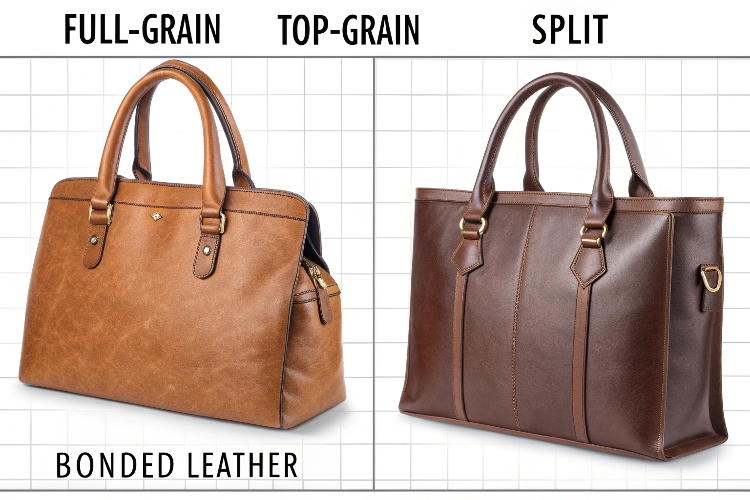
Common Misconceptions and Clarifications
“Expensive Means Real Leather?” – Price Trap Exposed
Many assume high-priced bags equal real leather, but it’s like buying coffee – expensive doesn’t guarantee quality. Some $2000+ Italian brands actually use split leather with paint thick as wall plaster. Meanwhile, $300 Scandinavian indie brands might use full-grain leather. Remember: “Genuine Leather” tags mean nothing in the US – even shoe repair scraps can carry this label.
Real Leather Has Quality Tiers
Top bag factories select leather like beauty pageants. Hermès’ Togo calfskin requires hides without mosquito bite scars, while cheaper real leather bags may use corrected grain (sanded and repainted). Fun fact: cowhide lasts 3x longer than sheepskin, but premium sheepskin from French supplier HAAS costs $200 per hide – 4x pricier than regular cowhide.
Faux Leather ≠ Low Quality
Don’t underestimate faux! Italian Alcantara’s ultrasuede feels softer than real leather – Porsche uses it for sports car seats. New mycelium leather made from mushroom roots shows 15% higher abrasion resistance than cowhide in lab tests. Luxury giant Kering invested $120 million in this tech last year – it might replace animal leather.
Care Labels Beat Touch Tests
If a “real leather” bag’s lining says “100% polyester”, beware – it might be bonded leather (glued leather scraps) that cracks within months. Pro tip: Light a corner sample with a lighter (don’t burn the bag!). Genuine leather turns to ash, PVC faux leather shrinks into black lumps.
Surprising Eco-Facts
PETA claims leather production uses 20x more water than faux, but BASF’s report shows: Processing cowhide creates 30% less carbon than premium faux leather. Buying secondhand leather proves most eco-friendly – Oxford University research confirms using a leather bag for 5 years creates 60% lower carbon footprint than new faux leather.
